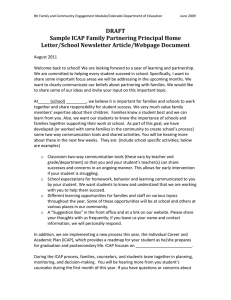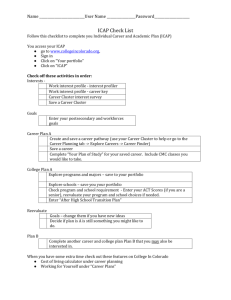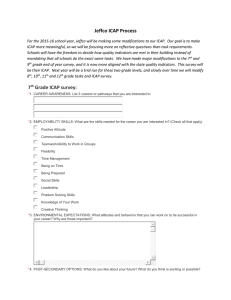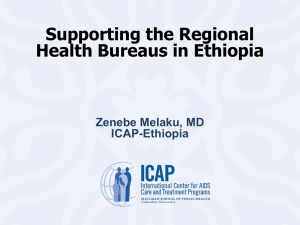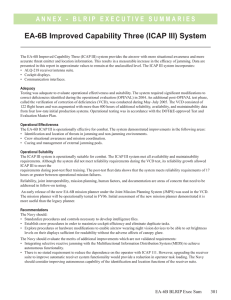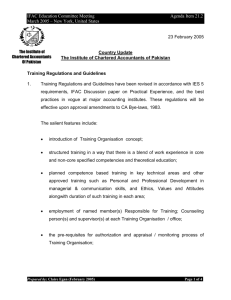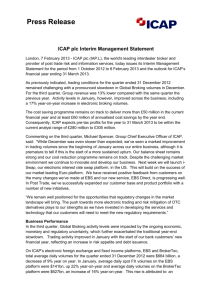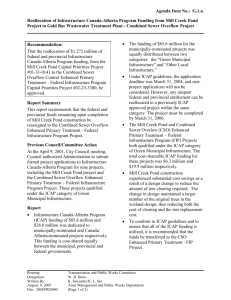Facility and Program Characteristics Tracking System: Baseline data
advertisement
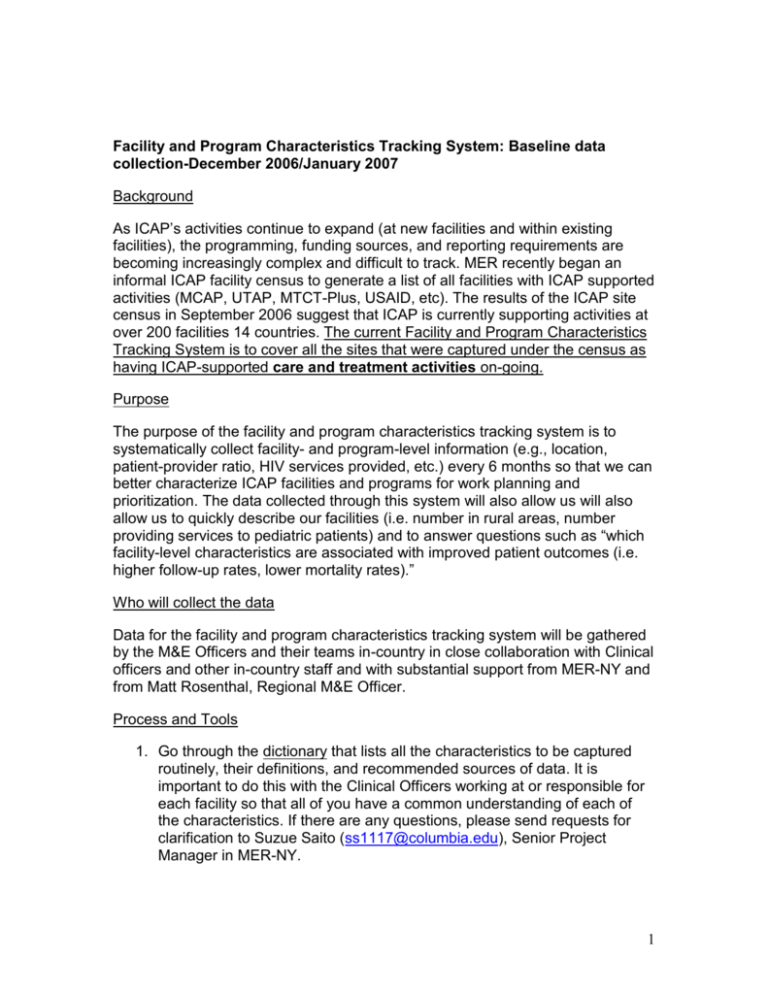
Facility and Program Characteristics Tracking System: Baseline data collection-December 2006/January 2007 Background As ICAP’s activities continue to expand (at new facilities and within existing facilities), the programming, funding sources, and reporting requirements are becoming increasingly complex and difficult to track. MER recently began an informal ICAP facility census to generate a list of all facilities with ICAP supported activities (MCAP, UTAP, MTCT-Plus, USAID, etc). The results of the ICAP site census in September 2006 suggest that ICAP is currently supporting activities at over 200 facilities 14 countries. The current Facility and Program Characteristics Tracking System is to cover all the sites that were captured under the census as having ICAP-supported care and treatment activities on-going. Purpose The purpose of the facility and program characteristics tracking system is to systematically collect facility- and program-level information (e.g., location, patient-provider ratio, HIV services provided, etc.) every 6 months so that we can better characterize ICAP facilities and programs for work planning and prioritization. The data collected through this system will also allow us will also allow us to quickly describe our facilities (i.e. number in rural areas, number providing services to pediatric patients) and to answer questions such as “which facility-level characteristics are associated with improved patient outcomes (i.e. higher follow-up rates, lower mortality rates).” Who will collect the data Data for the facility and program characteristics tracking system will be gathered by the M&E Officers and their teams in-country in close collaboration with Clinical officers and other in-country staff and with substantial support from MER-NY and from Matt Rosenthal, Regional M&E Officer. Process and Tools 1. Go through the dictionary that lists all the characteristics to be captured routinely, their definitions, and recommended sources of data. It is important to do this with the Clinical Officers working at or responsible for each facility so that all of you have a common understanding of each of the characteristics. If there are any questions, please send requests for clarification to Suzue Saito (ss1117@columbia.edu), Senior Project Manager in MER-NY. 1 2. Note that there are several characteristics that should be collected from central offices at the Ministry of Health or the Central Statistics Office, or any other relevant governmental organization. So a visit to the relevant offices to collect the data may be required. 3. Prior to any facility visit, we recommend that the M&E and clinical teams work together to compile as much of the data as possible either from existing notes, from previous facility assessments, or best recall of current status. We need the most up-to-date information possible. For fixed characteristics (see dictionary “regularity column”), we do not anticipate any change. Existing information should be sufficient. For the rest of the characteristics where we request updates every six months, existing information be used with case. If information you have is more than 6 months old, please make sure to verify during the facility visits or with central level governmental organizations . Any characteristics that cannot be gathered for a given facility during this initial phase can be gathered by the M&E or Clinical Officer during their next planned visit to the facility. You can plan joint visits or you can divide the number of facilities that each of you will be responsible for. In either case, it’s important to review the information together before entering it in the database. 4. Use the paper data collection sheet to record the data collected from facilities. 5. We will separately communicate on whether MER-NY will handle data entry or whether we will ask countries to enter in the web-based reporting system at http://www.mericap.columbia.edu/. Facility vs. Site In Facility and Program Characteristics Tracking System, we use the term “facility” to refer to the clinic or service (i.e. care and treatment clinic, pMTCT clinic or service) in a larger institution where ICAP supports programmatic activities. The term “site” is used to refer to the larger institution (i.e. hospital, health center) where the ICAP-supported facility is located. Deadline Data collection and submission should be completed for all facilities in the attached list by Jaunary 31, 2006. Your MER Liaison will be in contact with you several times over the next few weeks and provide assistance and support as needed. 2 Analysis and Dissemination Once the data has been entered for all the current ICAP facilities through the web-based Facility and Program Characteristics Tracking System, we will merge the dataset with the PEPFAR quarterly reports database to compare facility and program characteristics and aggregate patient outcome data. Once more facilities have electronic patient tracking systems in place we also hope to compare facility and program characteristics and disaggregated patient outcome data. In addition, we will map all facilities using GIS. Maps of all ICAP facilities, maps of all ICAP facilities that have more than a certain number of patients on treatment, maps of all ICAP facilities that have high patient-to-provider ratio, etc., will be generated. While MER-NY will manage the data, staff in all ICAP offices will be able to generate maps using the web-based GIS system. The weblink to the facility has already been established with some data from Mozambique and Lesotho at: http://beta.www.ciesin.columbia.edu/icap/icapmapper/viewer.htm. Attachments Data dictionary Data collection sheet List of target facilities 3
